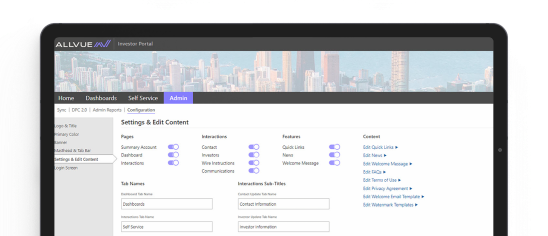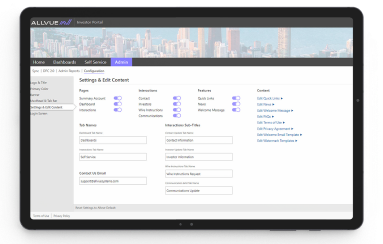
By: Ryan Burger
Senior Vice President - Product Strategy and Client Delivery
May 19, 2025
Finance Leaders Turning to SaaS Solutions to Handle Hurdles, Catch-Ups, and More
Given the creativity of compensation arrangements in the private capital industry, the range of conditions in different carry arrangements can add operational burdens on finance and HR team members. There’s no set formula, nor are there specific rules for designing deferred compensation arrangements.
Paul Patrow, a tax partner at Paul Hastings, and Esther Chiang, an investment funds and private capital partner at Paul Hastings, explained hurdles and catch-ups from the perspective of accountants in private capital during a recent discussion with Vice President for Product Strategy and Client Delivery, Ryan Burger of Allvue Systems.
“Having the ability to track taxes in real-time, as opposed to trying to scramble after the fact, is important and a huge benefit for principals,” said Paul.
Hurdle Provision Complexities in Carry and Compensation Agreements
To illustrate, let’s look at hurdle provisions as they relate to new participants (i.e., late joiners) that receive carried interest grants in funds that have positive accrued carry. More often than not hurdles create tax and legal challenges that homegrown carry arrangement spreadsheets or custom applications struggle to address.
Hurdle provisions (also referred to as a high watermark or notches, depending on firm) set the amount that the firm must distribute before new joiners receive any benefit given the value that was achieved prior to the new joiners receiving their award. Some firms will also institute provisions to “catch-up” participants to receive retroactive awards to align the new participants with the original participants once the hurdle is met.
Carry Grant Complexities in Carry and Compensation Agreements
Carry grants are a deferred compensation mechanism with no guarantee of future appreciation in the assets generating distributions. From the accountant’s perspective, however, following catchups requires visibility at all times and a clear understanding of the carry plan’s conditions. With specific arrangements and vesting rules, special attention must be paid to terms, schedules, and cliffs, including any forfeits due to separations. In all cases, thorough documentation is a must.
Managing Complex Carry and Compensation Agreements Across the Workforce
Leveraging a purpose-built comp and carry SaaS solution allows firms to track all hurdles across participants in real time, creating a single source of truth. Additional benefits include streamlining compensation, tax, and legal cycles through the configuration and application of advanced calculations, rules, and workflows.
Tax, Legal, and Human Resources Implications of Carry and Compensation
While alternative investment accountants must focus on the tax and legal implications of complex carry agreements, they must also support the HR function and employees with complex compensation and carried interest agreements.
For example, while fund managers and their legal teams will likely communicate the carry arrangements and hurdles to employees, the accounting team will need to provide reports to employees relating to the value conferred in the compensation and carried interest agreements.
Carry and Compensation Complexity Example: Untangling the Dollars at Work Approach
Some firms will opt for a dollars at work, or DAW, approach that provides a “back of the envelope” forecast of what employees can expect to receive in the future. Firms may report DAW using a multiplier effect of fund size and performance fee for the DAW calculation. Other firms opt to calculate fair market value to provide a current valuation to comp and carry plan participants. Ultimately, maintaining consistency and a clear explanation of what the value indicates at any time is task that accounting departments must address.
Just as with hurdle provisions, relying solely on spreadsheets to manage complex carry and comp arrangements can lead to tremendous headaches and seed hidden problems for firms (and their employees and partners) in the future. Purpose-built comp and carry SaaS solutions can automate most of this work and improve reporting to management and employees throughout their funds’ lifecycles.
FirmView® Carry and Compensation Management for Finance Leaders
FirmView is a comprehensive carry and compensation software solution to manage allocations, joiners, leavers, vesting, forecasting and reporting with a dedicated employee portal. FirmView also includes management of co-invest obligations, and full compensation including, salaries, bonuses, and retirement, to provide enhanced management and employee reporting.
Reach out to the Allvue team to learn how you can leave spreadsheets behind.
More About The Author

Ryan Burger
Senior Vice President - Product Strategy and Client Delivery
Ryan is responsible for Product Strategy and Solution Delivery over FirmView at Allvue Systems (formerly PFA Solutions). Since joining PFA in 2018, Ryan has helped a diverse array of Finance and HR alternative investment leaders digitize and automate processes and reporting related to carried interest, employee co-investments, and compensation. Ryan has extensive experience and knowledge in alternative asset operations, consulting, and software implementation, enabling him to lead the successful delivery of solutions that meet the complex and evolving needs the alternative investment industry.


